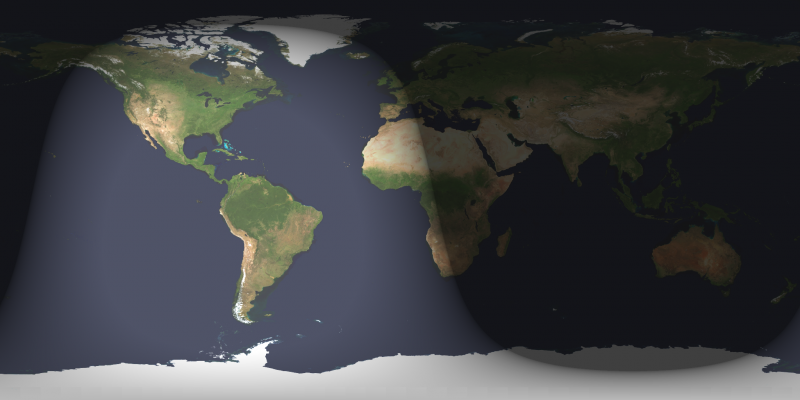Above: 2016’s Hunter’s Moon via Kurt Zeppetello
October 24, 2018, brings the Northern Hemisphere’s full Hunter’s Moon. For this hemisphere, this full moon counts as the second full moon of autumn (or second full moon after our autumn equinox). For the Southern Hemisphere, this is the second full moon of spring.
By definition, the Hunter’s Moon is the full moon immediately following the Harvest Moon, which is the full moon closest to the autumn equinox.
If you live in the Southern Hemisphere, your full Harvest and Hunter’s Moons will come six lunar months (six full moons) later, on March 21 and April 19, 2019, respectively.
At the vicinity of any full moon, the moon rises in the east around sunset, climbs highest up for the night around midnight and sets in the west around sunrise. On average, the moon rises about 50 minutes later with each passing day.
That’s not the case around the time of the Harvest or Hunter’s Moons. Around these full moons, the time between successive moonrises is less, more like 30 minutes at mid-northern latitudes.
Meanwhile, for the Southern Hemisphere now, the time between successive moonrises is greater than average.
This October 2018 Hunter’s Moon in particular swings a maximum of 5 degrees (10 moon diameters) south of the ecliptic (Earth’s orbital plane). For that reason, this year’s October full moon rises after sunset at northerly latitudes yet before sunset at southerly latitudes.


That complication aside, however, if you watch the moonrise each day this coming week – from either the Northern or Southern Hemisphere – you’ll see the moon rising farther north (or farther left) along the eastern horizon.
In a nutshell – for both hemispheres – autumn full moons herald a series of earlier-than-average moonrises, while springtime full moons bring a series of later-than-average moonrises.
Want to know when the moon rises in your sky? Click here and remember to check the moon phases and moonrise and moonset boxes.
The farther north that you live from the equator, the greater the Hunter’s Moon effect. For example, at Seattle, Washington (48 degrees north latitude), the moon rises about 30 to 35 minutes later daily for the next few days. At a far northern outpost – such as Arctic Village, Alaska (68 degrees north latitude) – the moon rises at or near the same time for days on end.
The moon turns precisely full on October 24 at 16:45 Universal Time. In United States time zones, that places the time of full moon on October 24, 2018, at 12:45 p.m. EDT, 11:45 a.m. CDT, 10:45 a.m. MDT, 9:45 a.m. PDT, 8:45 a.m. AKDT (Alaskan Daylight Time) and 6:45 a.m. HST (Hawaiian Standard Time).

Bottom line: On the night of October 24, 2018 (morning of October 25), watch the Hunter’s Moon light up the nighttime from dusk until dawn!












